No. 150 - John Henry
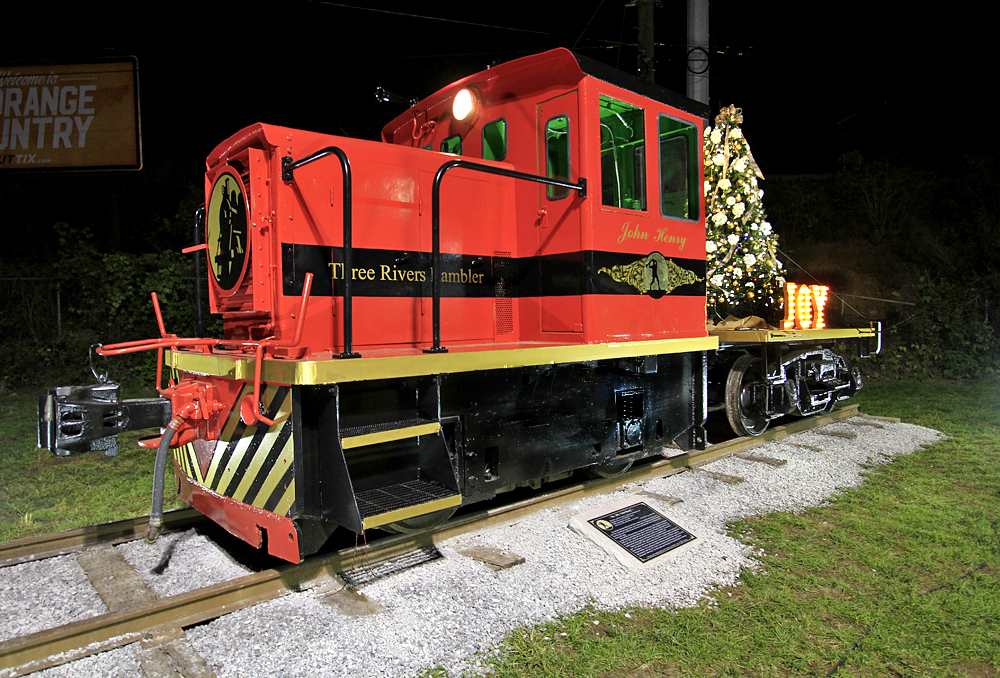

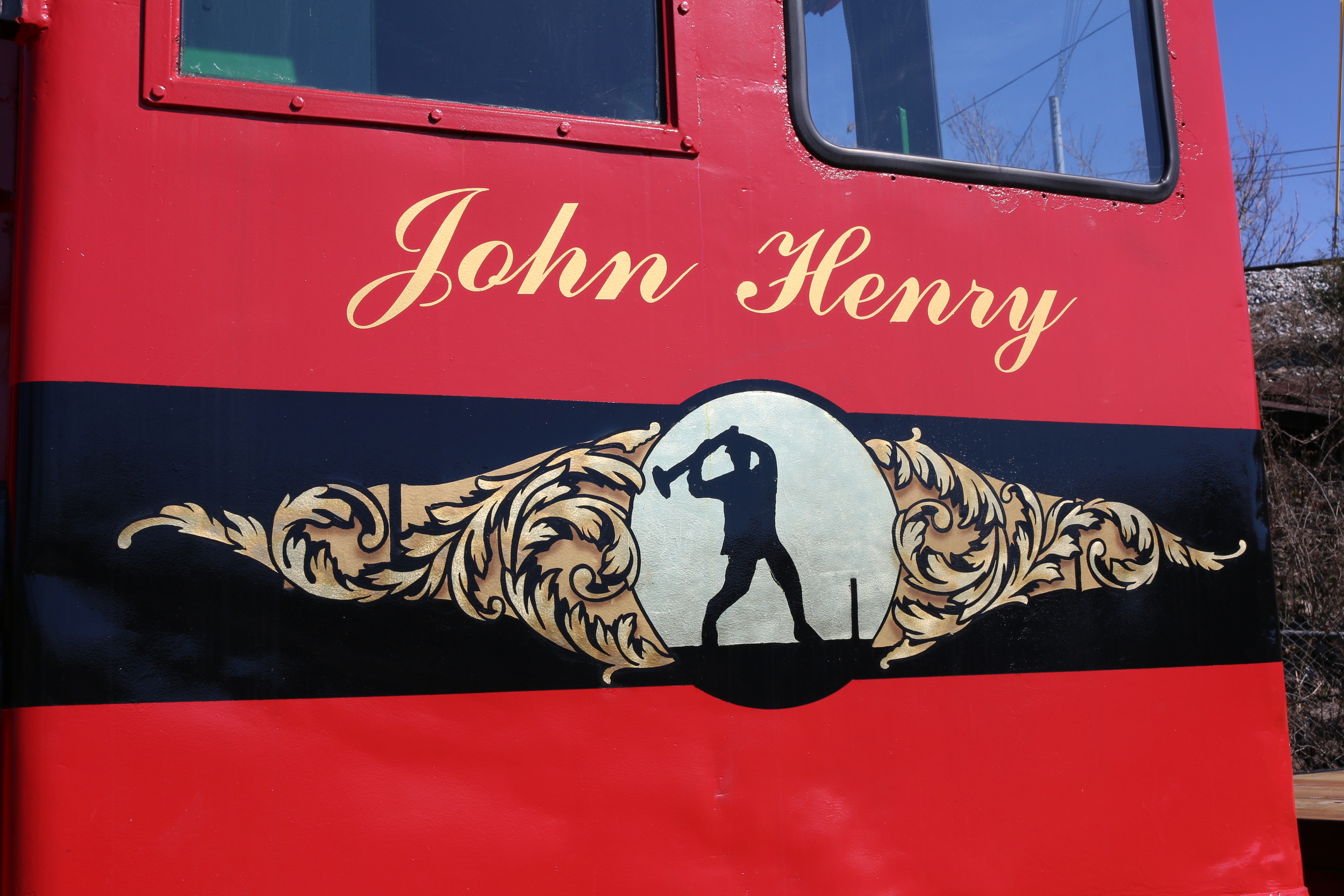
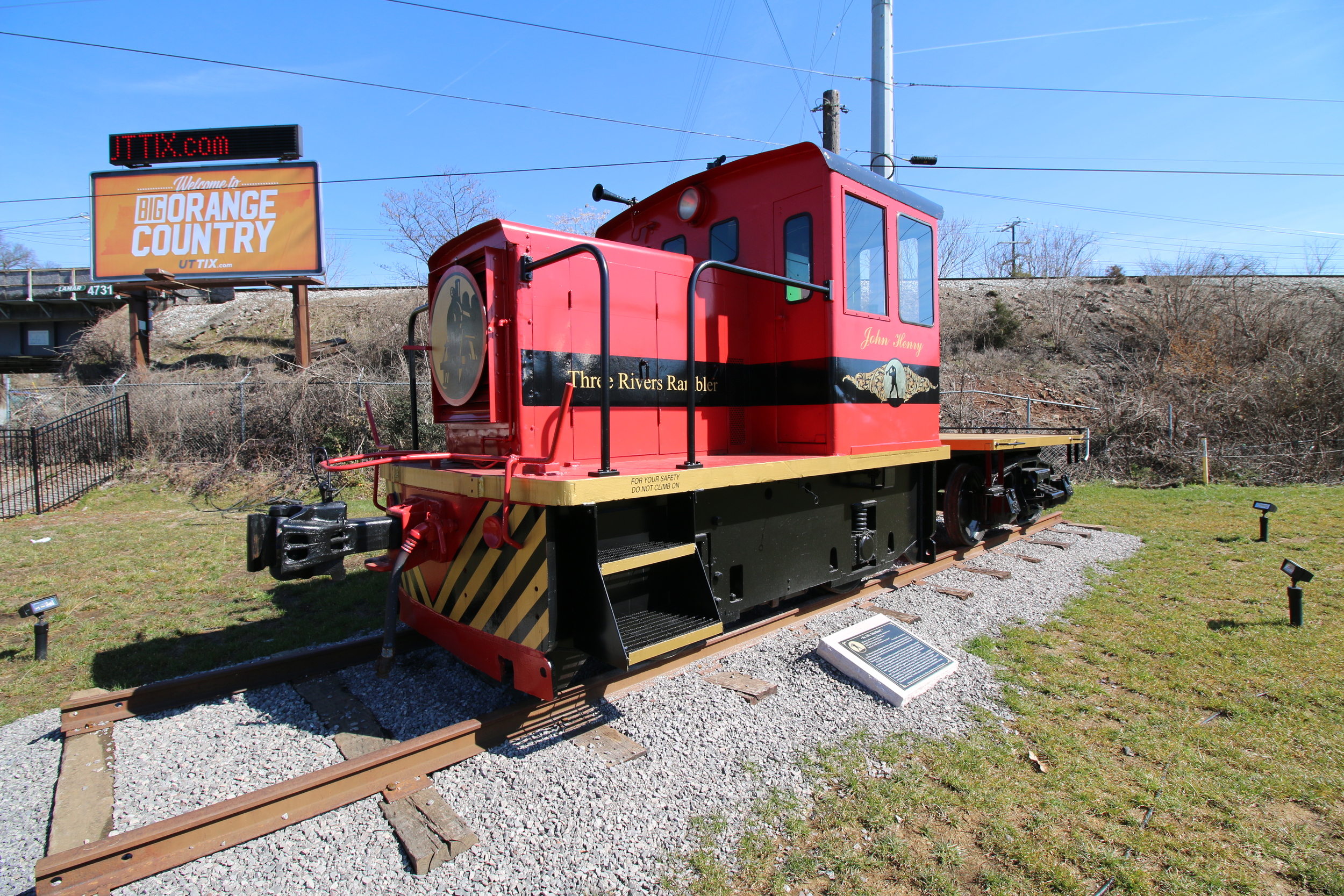
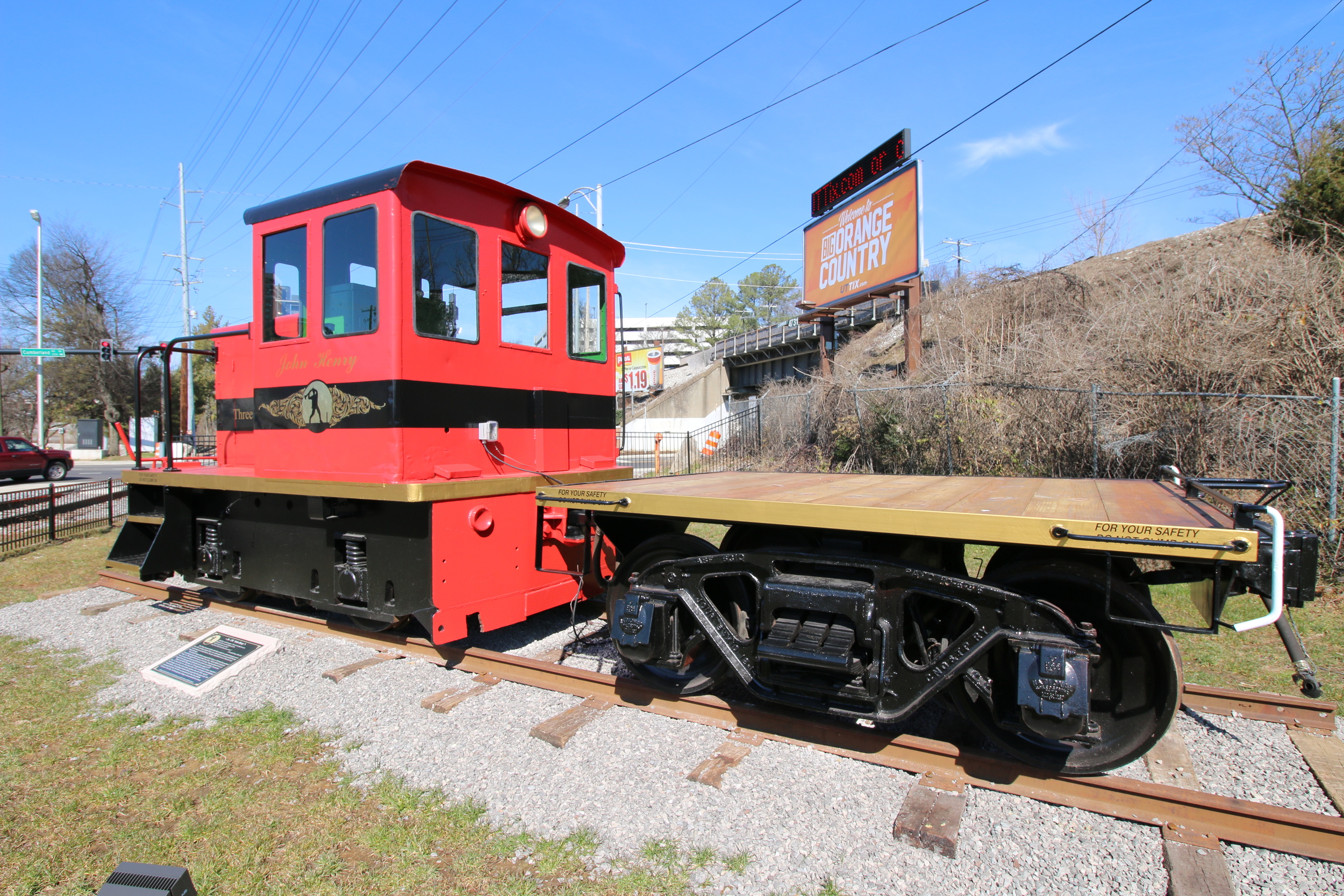
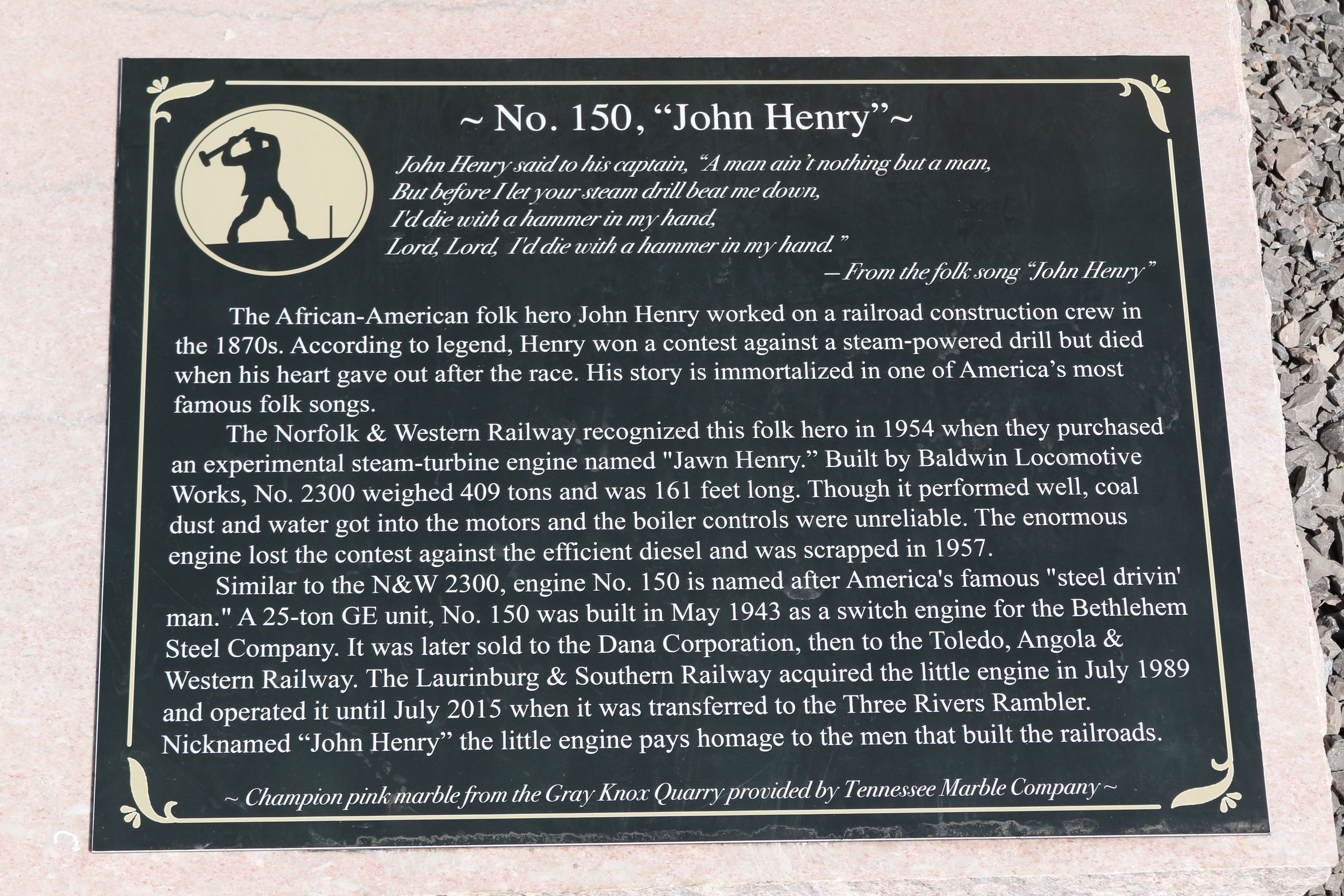
The African-American folk hero John Henry worked on a railroad construction crew in the 1870's. According to legend, Henry won a contest against a steam-powered drill but died when his heart gave out after the race. His story is immortalized in one of America's most famous folk songs.
The Norfolk & Western Railway recognized this folk hero in 1954 when they purchased an experimental steam-turbine engine named "Jawn Henry." Built by Baldwin Locomotive Works, No. 2300 weighed 409 tons and was 161 feet long. Though it performed well, coal dust and water got into the motors and the boiler controls were unreliable. The enormous engine lost the contest against the efficient diesel and was scrapped in 1957.
Similar to the N&W 2300, engine No. 150 is named after America's famous "steel drivin' man." A 25-ton GE unit, No.150 was built in May of 1943 as a switch engine for the Bethlehem Steel Company. It was later sold to the Dana Corporation, then to the Toledo, Angola & Western Railway. The Laurinburg & Southern Railway acquired the little engine in July of 1989 and operated it until July of 2015 when it was transferred to the Three Rivers Rambler. Nicknamed "John Henry" the little engine pays homage to the men that built the railroads.
John William Henry
To construct a railroad tunnel, the folk hero John Henry hammered a drill bit into rock to make holes for explosives. According to legend, Henry won a hammering contest in the 1870's against a steam-powered drill but died when his heart gave out after the race. His story is immortalized in one of America's most famous folk songs.
In the 2006 book, "Steel Drivin' Man: John Henry, the Untold Story of an American Legend," Scott Nelson contends that the ballad was based on a real person. The 20-year-old New Jersey-born African-American freeman, John William Henry, was a working in the headquarters of the 3rd Army Corps in 1863. Nelson speculates that Henry, like man African Americans, might have come to Virginia to work on the clean-up of the battlefields after the Civil War. Arrested, and in all likelihood unfairly tried for burglary, he was among the many convicts leased to work on the C&O Railway.
The owner of the C&O Railway, Collins Huntington, had recently made a bet with the government of Virginia that he could build a line linking eastern Virginia to the Ohio River within six years. Huntington wagered that if he finished by 1872, the railroad would belong to him; if he failed he would give every inch of track to the state. To win the bet, Huntington had to find a way to tunnel through the Allegheny Mountain range - using manpower and/or steam-powered drills.
Nelson believes that John Henry's famous contest took place at one of the C&O tunnels, Lewis Tunnel, in West Virginia, where newspaper stories and records indicate prisoners worked beside steam drills night and day. Records for John William Henry ended in 1873, suggesting that he had died. The evidence assembled by Nelson, though suggestive, is circumstantial. Nelson himself stresses that John Henry's heroic story is representative of the thousands of laborers who gave their lives to the railroad system.
I'd Die With A Hammer In My Hand
Whether or not John William Henry was the namesake of the song; whether the steam drill contest took place at Lewis, Big Bend, or Coosa Mountain Tunnel, the ballad of John Henry has been sung for over 145 years. These are numerous town festivals, celebrations, and statues dedicated to his endurance and determination. In song, story, and art, John Henry endures as a great American hero.
The Ballad of John Henry
John Henry, when he was a baby
Settin' on his mammy's knee
Picked up a hammer in his little right hand
Said, "Hammer be the death of me, me, me
Hammer be the death of me"
Some say he's born in Texas
Some say he's born up in Maine
I just say he was a Louisiana man
Leader of a steel-driving chain gang
Leader on a steel-driving gang
Well, the Captain said to John Henry
"I'm gonna bring my steam drill around
Gonna bring my steam drill out on the job
Gonna whip that steel on down, down, down
Whup that steel on down"
John Henry said to the Captain
"You can bring your steam drill around
You can bring your steam drill out on the job
I'll be your steam drill down, down, down
Beat your steam drill down"
John Henry said to his Shaker
"Shaker, you had better pray
If you miss your six feet of steel
I'll be your buryin' day, day, day
I'll be your buryin' day"
Now, the Shaker said to John Henry
"Man ain't nothing but a man
But before I'd let that steam drill beat me down
I'd die with a hammer in my hand, hand, hand
I'd die with a hammer in my hand"
John Henry had a little woman
Her name was Polly Anne
John Henry took sick and was laid up in bed
While Polly handled steel like a man, man, man
Polly handled steel like a man
They took John Henry to the graveyard
Laid him down in the sand
Every locomotive comin' a-rolling by
Hollered, there lies a steel-drivin' man, Lord, Lord,
There lies a steel-drivin' man

